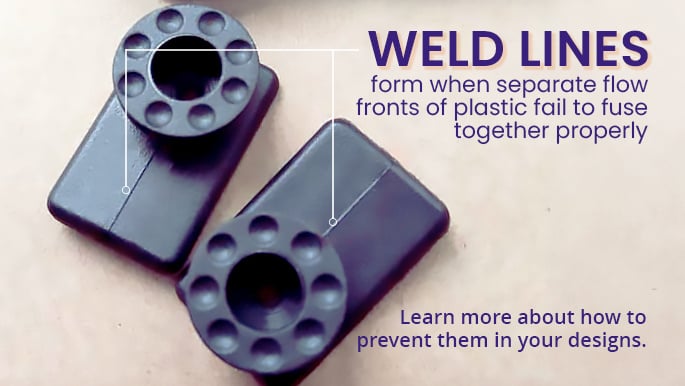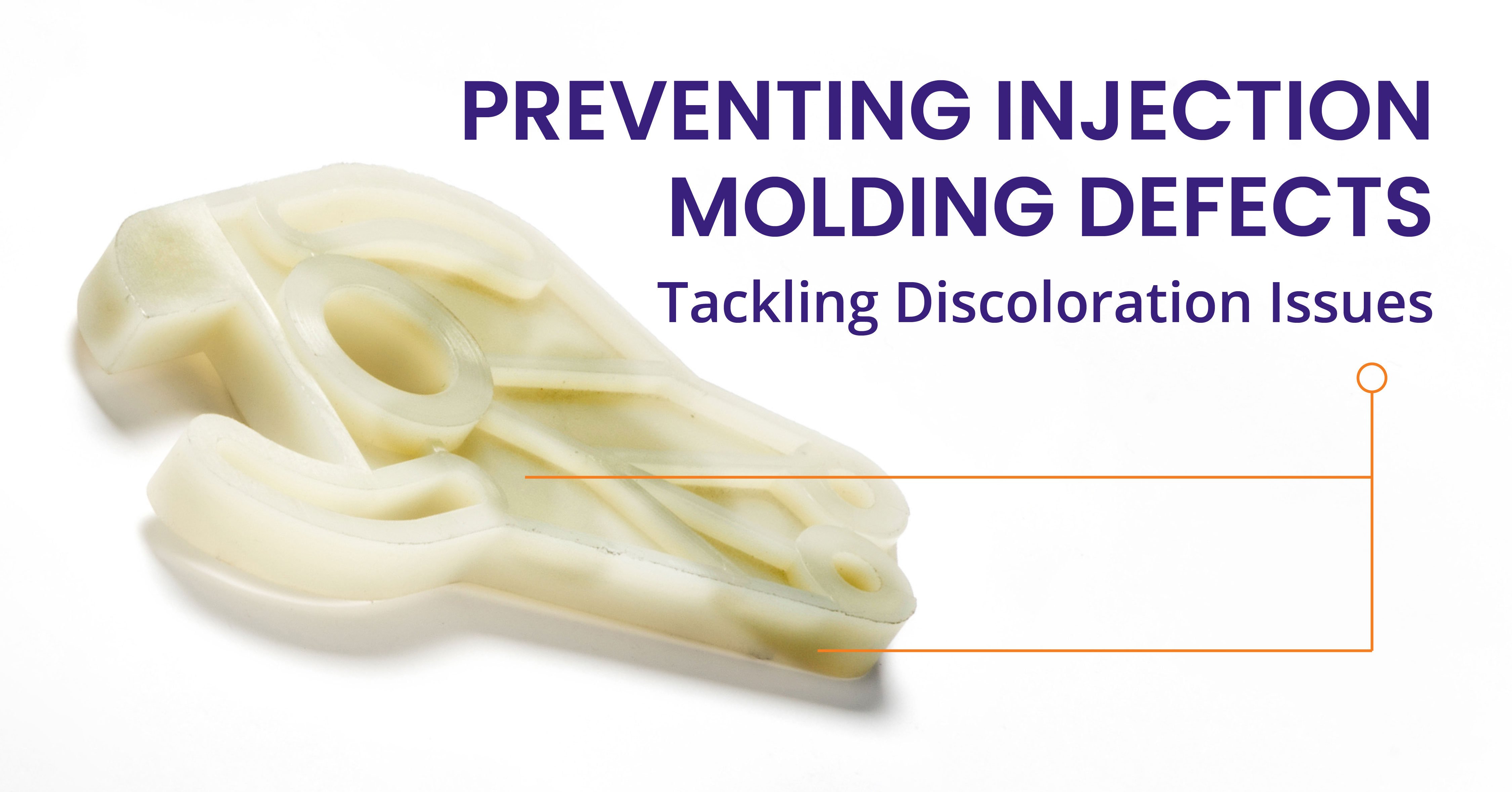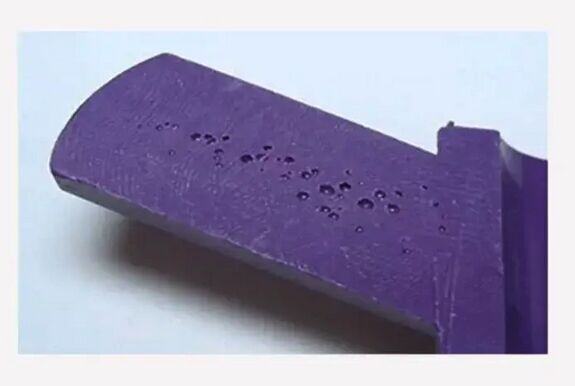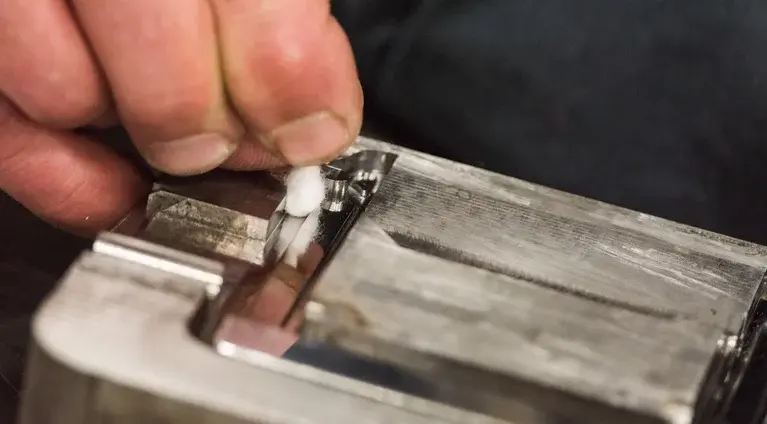Injection Molding Defects: Discoloration – Why It Happens and How to Avoid It
What Is Discoloration? Discoloration in injection molding refers to any noticeable inconsistencies in the color of molded parts, such as streaks or...

Weld lines are visible lines or seams that appear on molded plastic parts where two or more streams of molten plastic meet but do not fully fuse. While they may look like simple surface imperfections, weld lines can create structural weak points in the part. Depending on the application, these weak spots can lead to premature failure, reduced impact resistance, or cosmetic defects that affect the final product’s appearance.
Weld lines form when separate flow fronts of molten plastic converge but do not fully bond at a molecular level. Several factors contribute to this issue, including:
Minimizing weld lines requires careful adjustments in the molding process and part design. Some key strategies include:
If weld lines are causing issues with your parts—whether it's reduced strength, poor aesthetics, or inconsistencies in production—Aprios can help. Our expertise in injection molding allows us to optimize your design, material selection, and process parameters to ensure strong, seamless parts. Reach out to us today and let’s eliminate those weak spots together.

What Is Discoloration? Discoloration in injection molding refers to any noticeable inconsistencies in the color of molded parts, such as streaks or...

What Are Voids? Voids are empty pockets or spaces that form inside your molded parts. While they might not always be visible from the outside, they...

Learn how to optimize mold design for efficient injection molding and improve product quality while reducing costs.